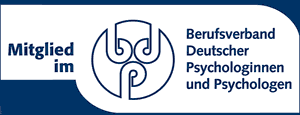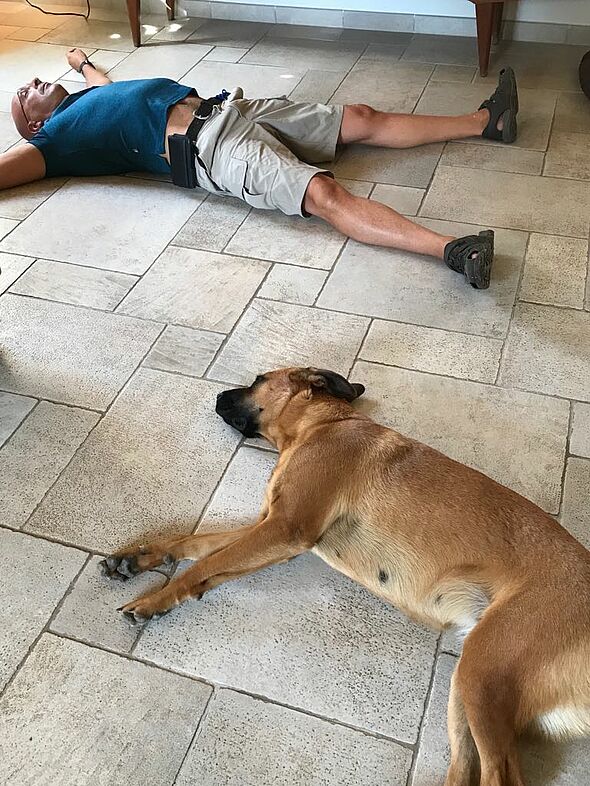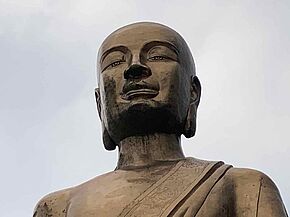Methods of Behavioral Therapy
- Stimulus-related methods:
- Stimulus confrontation = Exposure.
- Graduated exposure.
- Massed exposure.
- Implosion.
- Flooding
- Systematic desensitization according to Wolpe.
- Stimulus confrontation = Exposure.
-
- Confrontation in sensu .
- Confrontation in vivo.
- Response-related methods:
- Operant conditioning:
- Token system.
- Response cost system.
- Time-out.
- Contingency contract.
- Punishment.
- Extinction (ignoring).
- Stimulus control.
- Shaping (behavior formation).
- Chaining (linking).
- Prompting (following up).
- Fading (phasing out).
- Behavioral practice.
- Operant conditioning:
- Methods of cognitive restructuring
- according to Wells and Beck
- according to Ellis (Rational-Emotive):
- Problem-solving procedures according to Zurilla and Goldfried.
- Stress inoculation.
- Self-instructions according to Meichenbaum.
- Methods of model learning (imitation) according to Bandura.
- Methods of self-regulation according to Kanfer:
- Targeted self-observation. Self-reinforcement. Self-punishment.
- Stimulus control.
Methods & Techniques of Psychotherapy
Which methods and techniques does Egon Molineus apply in psychotherapy, for example?
- ABC schema according to Albert Ellis
- Mindfulness exercises.
- Applied relaxation according to Öst
- Externally-oriented 5-4-3-2-1 technique according to Dolan
- Systematic present-orientation according to Forgash
- Absorption technique in EMDR
- Activity building
- Activity planning
- Analysis of faulty logic
- Applied relaxation by Öst
- Anxiety and relaxation diary
- Anxiety management training
- Working with perpetrator introjections:
- Breathing technique for relaxation
- ATP Assertiveness Training - Program according to Ullrich de Muynck
- Building positive activities
- Attention redirection
- Exception questions according to De Shazer
- Time-out procedures (reinforcer exclusion, reinforcer withdrawal, time out)
- Autogenic training
- Conditional analytical conversations
- Increase need state/imbalance
- Stress compensation
- Observation/questioning of behavior of other persons in relevant situations
- Elimination of motivational obstacles
- Punishment
- Relationship design
- Bibliotherapy
- Body awareness technique
- Chaining
- Cool pack
- Coping questions according to De Shazer
- Differential feedback
- Differential social reinforcement
- Clarify discrepancy between initial state and target state
- Discrimination training
- Disputation of irrational assumptions through open, confrontational and provocative questions
- Dissonance shaping
- Exchange reinforcement system (token-economy programs):
- Practice of behaviors
- EMDR
- Emotion change through opposite action
- Emotion change through rethinking
- Decatastrophizing
- Depathologizing
- Decision making
- Decision matrix of advantages and disadvantages
- Recording, analysis, structuring and differentiation of irrational thought patterns and assumptions
- Creating pro-con lists
- Build desirable, attractive alternatives
- Establishment of a "safe place"
- Worry exposure according to Brown
- Exposure and response prevention
- Fading
- Build ability to delegate
- Fantasy exercises
- Fictional letter to mother
- Flash-back control exercise according to Rothschild
- Five-column technique
- Thought stopping
- Thought chair:
- Guided discovery
- Pleasure training according to R. Lutz: Little school of enjoyment
- Interview skills
- Goal Attainment Scaling
- Graduated task setting
- Graduated confrontation
- Graduated extinction
- GSK Group training of social competencies according to Hinsch and Pfingsten
- Guided Mastery
- Good fairy
- Habituation training
- Increase action tendencies
- Humor and provocation
- Identification of automatic thoughts according to Aaron T. Beck
- Hedgehog ball
- Imagination exercises
- Implosion
- Inner mindfulness
- Inner child at safe place
- Inner helper
- Cognitive therapy according to Aaron T. Beck
- Cognitive restructuring
- Cognitive processing therapy (CPT) for sexual abuse victims
- Cognitive relabeling
- Coitus prohibition
- Communication training according to Ludwig Schindler in couple therapy
- Communication training
- Confrontation and response prevention
- Confusion technique
- Providing consensus information
- Maintain contacts
- Contingency control according to F. Kanfer
- Contingency contracts
- Contract management according to Kanfer
- Controlled abreaction
- Concentrative relaxation
- Body awareness exercises
- Light beam method (imaginative method)
- Massed anxiety confrontation/flooding
- Mastery and Pleasure diary
- Meditation
- Model learning
- Modification of dysfunctional cognitions
- MUT exercise for complex PTSD according to Luise Reddemann
- Negative reinforcement
- Making public
- Pacing and Leading
- Paradoxical intervention
- Fantasy journey
- Pie-chart technique
- Positive reinforcement
- Positive self-talk
- Problem-solving training according to Goldfried & Zurilla
- Progressive muscle relaxation PMR
- Progressive muscle relaxation (PMR)
- Prolonged Exposure according to FOA for PTSD
- Prompting
- Response reversal (Habit-Reversal-Training) according to Azrin and Nunn
- Response prevention
- Response delay to loosen the reaction chain
- Reality orientation training
- Reality testing
- Reattribution
- Reframing
- Stimulus confrontation
- Activate resources
- Restraining
- RET Rational-emotive therapy according to Albert Ellis
- Risk exercises
- Reduce risk behavior
- Role play
- Role exchange
- Role reversal
- Relapse prevention
- Saturation
- Sleep restriction
- Protective light circle
- Screen technique
- Self-instruction training according to Meichenbaum
- Self-control
- Self-management
- Assertiveness training
- Self-verbalization according to Donald Meichenbaum
- Sensuality training
- Shaping
- Safe place (trauma therapy)
- Safe Inner Place
- Socratic dialogue
- Social competence training
- Column technique for dealing with automatic thoughts
- Mirror exercises
- Mood barometer
- Stimulus control according to Kanfer
- Stress inoculation training according to Meichenbaum
- Stress inoculation training by Kilpatrick for rape victims
- Structured monitoring
- Search for alternatives
- Symptom prescription
- Systematic desensitization
- Daily schedule
- Daily protocols of negative thoughts
- Participant model learning according to Albert Bandura
- Therapy diary
- Deep breathing
- Social perception training
- Funneling
- Prevention of avoidance and neutralization reactions
- Utilization
- Verbal conditioning
- Covert extinction
- Covert negative reinforcement
- Covert positive reinforcement
- Covert sensitization
- Covert reinforcer withdrawal
- Covert counterconditioning
- Covert model learning
- Behavioral experiments
- Behavioral contracts
- Reinforcer lists
- Reinforcer return
- Allow being pampered
- Video confrontation
- Four-column technique
- Visualization exercises
- VTP Behavioral training program for building social competence according to Feldhege and Krauthan
- Perception guidance
- Weekly schedule
- Miracle question
- Time management
- Time projection
- Seeking, clarifying, finding goals
- Satisfaction experiences
- Diaphragmatic breathing
guided audio recordings for my clients
Relax & Grounding Audio Recordings
Here are audio recordings with voice guidance and free background music, which are used as additional tools for our work with my clients. They can contribute to relaxation or to a necessary protective distraction and are based on empirically tested methods in psychotherapy. This list will be expanded over time.
Concentrative Relaxation
Concentrative relaxation is a relaxation technique that focuses on the targeted direction of attention and concentration on specific thoughts or images in order to achieve a state of deep relaxation. This method is often used in the context of psychotherapeutic treatment or for stress management.
There are various forms and approaches to concentrative relaxation, including:
- Autogenic training: A method in which physical and mental relaxation is achieved through autosuggestion.
- Progressive muscle relaxation: A technique in which muscle groups are systematically tensed and then relaxed again.
- Meditation: A practice that aims to calm the mind and focus attention.
- Visualization: A technique in which positive, calming images are conjured up in the mind.
These techniques can help reduce stress, improve concentration and enhance general well-being.
GROUNDING TECHNIQUES
Grounding techniques are a set of strategies used in trauma therapy to help individuals manage and reduce symptoms of distress, dissociation, and overwhelming emotions. These techniques aim to bring the person's focus back to the present moment and their immediate physical environment, counteracting the effects of traumatic memories or stress. Here are some commonly used grounding techniques in trauma therapy:
Physical Grounding Techniques Physical grounding techniques focus on utilizing the body and its sensations to bring awareness back to the present moment. These techniques often involve exercises that activate the senses, such as consciously feeling your feet on the ground or the back against a chair. By concentrating on such physical sensations, one can distract from distressing thoughts and emotions. Progressive Muscle Relaxation (PMR) and Deep Breathing / Abdominal Breathing are included to enhance body awareness and calm the mind. Other techniques include Body Scan, placing feet on the ground, washing hands with cold water, walking barefoot, hugging oneself, and yoga poses such as Mountain Pose or Tree Pose.
Sensory Grounding Techniques Sensory grounding techniques use the senses to bring the mind into the present. These techniques involve consciously experiencing touch, smells, tastes, and sounds. For example, holding an ice cube or running your hands over a textured surface can help focus your attention. Essential oils or strongly scented items like coffee or flowers can stimulate the sense of smell. The 5-4-3-2-1 method helps focus on the surroundings. Taste sensations can be intensified by sucking on a sour candy. Consciously listening to music or natural sounds can also help calm and center the mind.
Cognitive Grounding Techniques Cognitive grounding techniques rely on mental exercises to sharpen focus and engage the mind. These techniques often involve counting exercises like counting backward from 100 by sevens or reciting the alphabet backward, which require concentration. The category game, such as naming cities starting with A, helps occupy the mind and distract from distressing thoughts. Positive affirmations like "I am safe" or "This too shall pass" can convey a sense of security and calm. Describing the surroundings in detail, solving mathematical problems, singing a favorite song in your head, or reciting a poem are also effective techniques.
Movement-Based Grounding Techniques Movement-based grounding techniques use physical activity to enhance awareness and calm the mind. These techniques include activities such as mindful walking, where one consciously focuses on the sensation of feet touching the ground and the details of the surroundings. Zen, Tai Chi and Qigong offer slow, meditative movements that help calm the mind and promote body awareness. Jumping jacks, stretching, climbing stairs, dance improvisation, and balance exercises can also direct attention to the body and reduce stress.
Mindfulness-Based Grounding Techniques Mindfulness-based grounding techniques emphasize the conscious experience of the present moment through mindfulness practices. These techniques include mindful eating of a raisin, where one focuses on the taste, texture, and smell of the food. Body scan meditation and breath observation help focus and calm the mind. Guided visualizations of a safe place and loving-kindness meditation promote a sense of security and well-being. Walking meditation, mindfulness of thoughts, and object meditation, such as focusing on a candle, are other techniques to calm and center the mind.
Practical Grounding Techniques Practical grounding techniques use everyday activities to anchor awareness in the here and now. These techniques include routine activities like coloring mandalas, journaling, or solving puzzles, which provide security and structure through their familiar processes. Knitting or crocheting, folding origami, and gardening can also help express thoughts and feelings and calm the mind. Cooking a favorite meal and cleaning and organizing offer additional ways to direct focus and reduce stress.
5-4-3-2-1 Technique
Deutsch & English

|
The 54321 technique in trauma therapy is a mindfulness exercise that helps to calm down and stay in the present moment. It uses the senses (sight, touch, hearing, smell, taste) to focus attention on the immediate surroundings, thereby diverting attention from distressing thoughts.
BREATHING TECHNIQUES
Breathing techniques in psychotherapy enable clients to improve their mental health through self-practice. They utilize the connection between breathing and the autonomic nervous system to reduce stress and anxiety, increase attention, and promote emotional stability.
Self-regulation: Conscious breathing exercises calm the nervous system and help clients control their stress responses.
Mindfulness: Breathing techniques promote concentration and presence in the moment, which reduces negative thought patterns.
Anxiety reduction: Regular practice activates the parasympathetic nervous system, reduces anxiety and physiological stress symptoms.
Self-efficacy: Clients gain confidence in their ability to manage stress and emotions.
Physical benefits: Breathing exercises improve oxygen supply and alleviate physical stress symptoms such as muscle tension.
Accessibility: These techniques are easy to learn, require no equipment, and can be applied at any time.
Overall, breathing techniques offer an effective, scientifically-based method through which clients can independently strengthen their emotional and physical health.
Diaphragmatic breathing

|
Diaphragmatic breathing (Clark, Salkovskis, & Chalkley, 1985) Often complements relaxation in exposure-based treatments and is used to reduce breathing rate. The procedure is relatively simple and involves replacing shallow or upper chest breathing with deep diaphragmatic inhalation and exhalation. In addition to changing the allocation of their breathing, patients are taught to monitor and accelerate the speed at which they inhale and exhale, so that exhalations last about five seconds and inhalations about four seconds. This has the effect of minimizing hyperventilation and, when the procedure has been comprehensively combined with progressive muscle relaxation, inducing a relaxed state.
diaphragmatic breathing

|
Diaphragmatic breathing (Clark, Salkovskis, & Chalkley, 1985) is often used in exposure-based treatments to reduce respiration rate and complement relaxation. This technique replaces shallow chest breathing with deep diaphragmatic breaths. Patients learn to pace their breathing, with exhalations lasting about five seconds and inhalations about four seconds, minimizing hyperventilation and inducing relaxation when combined with progressive muscle relaxation.
deep breathing

|
Deep breathing helps reduce stress, promote relaxation, and improve overall well-being. By consciously and deliberately controlling your breath, you calm your body, which can reduce anxiety and tension. This technique supports centering yourself and finding inner peace.
SUGGESTIVE RELAXATION TECHNIQUES
suggestive techniques.
Suggestive relaxation techniques in psychotherapy help clients reduce stress and increase well-being through self-practice. They use positive suggestions and relaxation to activate the parasympathetic nervous system and achieve deep relaxation.
These techniques promote self-regulation by controlling stress responses and reducing negative emotions. Through regular application, clients gain confidence in their ability to independently manage stress and negative thoughts.
Physiological benefits include muscle relaxation and a lowered heart rate. Suggestive relaxation techniques are easy to learn and can be applied at any time, making them a practical method for improving mental and physical health.
autogenic training according to Schultz
Deutsch & english

|
Autogenic Training, also known as autogenic training according to Schultz, is a relaxation method developed in the 1920s by the German psychiatrist Johannes Heinrich Schultz. It is based on autosuggestion and aims to achieve a state of deep relaxation through concentration and mental exercises. Here are the basic principles and techniques of autogenic training:
1. Self-Relaxation: Deep physical and mental relaxation is achieved through concentration on specific formulas or suggestions.
2. Repetition: Regular practice and repetition of the formulas are crucial for success.
3. Self-Control: The method promotes self-control and helps to better manage stress and tension.
Progressive Muscle Relaxation
nach Jacobsen

|
Progressive Muscle Relaxation (PMR), also known as Progressive Muscle Relaxation (PMR), is a relaxation technique developed by American physician Edmund Jacobson in the 1920s. The goal of this method is to reduce muscle tension and thereby lower the general stress level.
Pay attention to the sensations during relaxation.
Benefits of Progressive Muscle Relaxation • Stress reduction: Lowering the general stress level and promoting physical and mental relaxation. • Better sleep: Promoting deeper and more restful sleep. • Pain relief: Relief from tension headaches and other pains caused by stress. • Improved body awareness: Increasing awareness of physical sensations and tension states.
Regularity: Daily practice sessions of 10-20 minutes can bring the best results.
PMR can be useful in many contexts, from stress management in daily life to supporting the treatment of anxiety disorders and sleep disorders.
Progressive Muscle Relaxation
PMR english

|
Progressive muscle relaxation (PMR) is a relaxation technique developed by the American doctor Edmund Jacobson in the 1920s. The aim of this method is to reduce the tension of the muscles and thus reduce the general stress level.
Pay attention to the sensations during relaxation.
Benefits of progressive muscle relaxation
• Stress reduction: lowering the general stress level and promoting physical and mental relaxation.
• Better sleep: Promoting a deeper and more restful sleep.
• Pain relief: Relief of tension headaches and other stress-induced pain.
• Improved body perception: Increased awareness of physical sensations and states of tension. Regularity: Daily exercise sessions of 10-20 minutes can bring the best results.
PMR can be useful in many contexts, from coping with stress in everyday life to support in the treatment of anxiety and sleep disorders.
Applied relaxation according to Öst

|
We are facing a situation here that triggers anxiety and fear in you, and we will address this using the technique of Applied Relaxation (according to Lars-Göran Öst). This method goes beyond simple relaxation exercises. You learn not only to relax your muscles, but to actively apply this relaxation to specific situations and stimuli that are known to trigger anxiety and fear. By using this technique, we can specifically work on the triggers of your anxiety and change your reactions to them.
applied relaxation Öst
We are facing a situation here that triggers fear in you, and we will address it with the help of the technique of Applied Relaxation (according to Lars-Göran Öst). This method goes beyond simple relaxation exercises. You will not only learn to relax your muscles, but also actively apply this relaxation to certain situations and stimuli that are known to trigger fear. By using this technique, we can work specifically on the triggers of your fear and change your reactions to it.
VISUALIZATION TECHNIQUES
visualisation techniques
Visualization at the Beach
Visualizing, also known as mental imagery or imagination exercise, is a technique for emotion regulation in which one imagines positive images, scenarios, or memories to influence and control one's emotions.
Here are some steps on how to apply visualization for emotion regulation:
- Quiet place: Find a quiet and comfortable place where you are undisturbed.
- Relaxation: Sit or lie down comfortably and take a few deep breaths to relax.
- Set goal: Determine the goal of your visualization, e.g., stress reduction, anxiety management, or strengthening self-confidence.
- Choose positive image: Select an image or scene that makes you happy and calm. This can be a place in nature, a beautiful memory, or a future event.
- Include details: Imagine the scene as vividly and detailed as possible. Integrate all senses – seeing, hearing, smelling, feeling, and tasting.
- Feel emotions: Try to really feel the positive emotions associated with the scene. Let these feelings flow through your body.
- Stay: Remain in this imagination for a few minutes and enjoy the positive emotions.
- Return: Return slowly and consciously to the present, maintaining the positive feelings for as long as possible.
guided imagery
Diese Entspannungsmethode kann helfen, den Körper zu beruhigen, Stress abzubauen und Angstgefühle zu lindern.

|
guided imagery

|
is a technique that evokes positive mental images to achieve a soothing effect
safe inner place
Imagination exercise for trauma therapy

|
The "Finding Your Safe Inner Place" technique in trauma therapy helps you create an inner refuge where you feel safe and secure. This can help you reduce stress, alleviate anxiety, and provide a sense of control and safety in challenging situations. The safe inner place acts as a mental retreat, promoting relaxation and emotional regulation, and allows you to practice self-care. By regularly practicing this technique, it becomes easier to access this place, helping you find peace and stability whenever needed.
safe place
Trauma therapy imagination exercise

|
The "Safe Place" technique in trauma therapy helps you create an inner retreat where you feel safe and secure. This can help you reduce stress, diminish anxieties, and give you a sense of control and safety in distressing situations. The safe inner place serves as a mental refuge, promotes relaxation and emotional regulation, and enables you to practice self-care. Through regular practice of this technique, it will become easier for you to access this place and benefit from it by consciously taking time to find peace and stability.
inner helper
Trauma therapy imagination exercise

|
The "Inner Helper" technique is used in psychotherapy to mobilize inner resources and strengths. It is particularly suitable for stress management, increasing self-esteem, reducing anxiety and insecurity, as well as promoting creative problem-solving.
Benefits for the patient:
- Activation of inner strengths: Recognizing and utilizing one's own abilities.
- Promotion of imagination: Development of creative solution approaches.
- Improved emotional regulation: Better management of negative emotions.
- Long-term support: Using a memory anchor for future difficult situations.
This technique helps to approach challenges with more self-confidence and creativity.
inner helper
Use these abilities in difficult situations.

|
The "Inner helper" technique is used in psychotherapy to mobilize inner resources and strengths. It is particularly useful for stress management, boosting self-esteem, reducing anxiety and insecurity, and fostering creative problem-solving.
Benefits for the patient:
- Activating inner strengths: Recognizing and utilizing personal abilities.
- Enhancing imagination: Developing creative solutions.
- Improving emotional regulation: Better managing negative emotions.
- Long-term support: Using a memory anchor for future challenging situations.
This technique helps patients approach challenges with increased confidence and creativity.
Light Beam Technique

|
The Light Beam Method, also known as the "Light Beam Technique" or "Beam of Light Technique", is a visualization and imagination method used in trauma therapy. This technique is used to support traumatizedindividuals in processing their traumatic memories and associated emotions. Here is an overview of how and for what the Light Beam Method is used:
Application of the Light Beam Method
- Introduction and Preparation: - The therapist introduces the patient to the method and explains the process. - A relaxed and safe environment is created to strengthen the patient's trust.
- Visualization: - The patient is asked to imagine a light beam. This light beam can have a specific color that has a calming or healing effect on the patient. - The light beam is described as powerful, safe, and protective.
- Focus on the Trauma: - The patient directs the light beam toward the traumatic memory or the bodily sensation connected to the trauma. - The light beam serves to illuminate the distressing memory and alleviate the emotional pain.
- Healing and Integration: - While the light beam is directed at the traumatic memory, the patient is encouraged to feel the healing effect of the light beam. - The therapist supports the patient in incorporating positive feelings and resources into the process. - The traumatic memory can thereby lose intensity and be better integrated into the overall personality.
What the Light Beam Method is used for:
- Reduction of Trauma Stress: - The method helps reduce the emotional burden and stress caused by traumatic memories. - The light beam has a calming and supportive effect, helping the patient feel safer and more in control.
- Promotion of Healing: - Through the visualization of the healing light beam, the patient can bring positive and healing energy into the process. - This can strengthen the feeling of hope and healing and support the path to recovery.
- Increase of Self-Confidence and Self-Control: - The method strengthens the patient's awareness of their own resources and abilities to cope with traumatic experiences. - The patient learns that they can actively contribute to their own healing.
- Integration of Positive Resources: - By incorporating positive resources and feelings during the application of the light beam, the healing process is supported. - This helps the patient strengthen positive associations and memories and replace negative ones with positive ones.
The Light Beam Method is a gentle but effective technique that can be used in combination with other therapeutic approaches in trauma therapy. It offers patients a way to process their traumatic memories in a safe and controlled framework and activate their self-healing powers.
DEFUSION EXERCISES
Defusion exercises help people distance themselves from their thoughts and view them as mere mental events, rather than holding them as absolute truths.
• Techniques: Examples include repeating a word until it loses its meaning, or singing thoughts to reduce their seriousness.
DECENTERING EXERCISES
Decentering exercises promote the ability to perceive thoughts and feelings from an observing standpoint without identifying with them.
Techniques: This can be achieved through mindfulness meditation, recognizing and naming thoughts and feelings, or imagining that thoughts pass by like clouds.
Thoughts like clouds
Decentering exercise

|
This exercise belongs to the category of mindfulness and decentering exercises. It helps to observe thoughts from a distanced perspective and recognize their transient nature.
MINDFULNESS TECHNIQUES
Mindfulness techniques, also known as Mindfulness techniques, are methods to sharpen awareness and presence in the present moment. These techniques can help reduce stress, improve concentration, and enhance overall well-being.
body scan

|
The BODY SCAN technique is a mindfulness-based method frequently used in psychotherapy. The aim of the body scan is to enhance awareness of one's own body and establish a deeper connection between body and mind.
Benefits and Advantages
- Stress Reduction: The body scan helps reduce stress by directing awareness to the present moment, thus reducing rumination and worries.
- Body Awareness: It promotes a better understanding and greater appreciation of one's own body.
- Emotional Regulation: By mindfully perceiving physical sensations, emotions can be better recognized and regulated.
- Pain Relief: Studies have shown that the body scan can contribute to the relief of chronic pain by altering the perception and management of pain.
- Improvement of Sleep Quality The body scan can help reduce sleep problems by promoting relaxation and calmness.
body awareness
The Body Awareness Technique is a mindfulness practice aimed at enhancing body awareness and promoting relaxation. It helps patients strengthen their connection to their own body by consciously noticing various physical sensations and relaxing in a calm, safe environment. This technique can help reduce stress, improve overall well-being, and foster a deeper understanding of one's body.
By focusing on different parts of the body and mindfully sensing the sensations, the ability to be present in the moment is enhanced, leading to a deep inner peace.
MEDITATION TECHNIQUES.
Meditation is a practice aimed at calming the mind, improving concentration, and achieving a state of inner peace. It has its roots in various religious and spiritual traditions, but is now often used in secular contexts for stress management and promoting general well-being.
Types of Meditation
- Mindfulness Meditation: - Goal: Being present in the current moment without judgment. - Technique: Concentration on breathing, bodily sensations, or the environment to calm and focus the mind.
- Concentration Meditation: - Goal: Calming the mind by focusing on a single object, such as a mantra, an image, or the breath. - Technique: Repeatedly returning to the chosen focus when the mind wanders.
- Guided Meditation:
- Goal: Relaxation and inner journey through guidance of a voice that leads through various scenarios or visualizations.
- Technique: Listening and immersing oneself in the described images or scenes.
- Transcendental Meditation (TM):
- Goal: Achieving a deep state of calm and inner peace.
- Technique: Repetition of a specific mantra to calm the mind and enter a state of deep relaxation.
- Loving-Kindness Meditation (Metta Meditation):
- Goal: Cultivating positive emotions such as love and compassion.
- Technique: Repetition of phrases that express benevolence and kindness, first toward oneself and then toward others.
Benefits of Meditation:
- Stress reduction: Meditation can help lower stress levels and achieve deeper relaxation.
- Improved concentration: Regular practice can increase the ability to focus and maintain attention.
- Emotional health: Meditation can help reduce negative emotions and promote positive feelings.
- Self-awareness: It can promote understanding and acceptance of one's own self.
- Physical health: Studies show that meditation can lower blood pressure, strengthen the immune system, and relieve pain.
Observation of thoughts and feelings
Mindfulness meditation

|
Insight meditation is a central component of mindfulness meditation. This practice helps one become aware of their own mental and emotional processes without being carried away by them. It promotes deeper understanding and acceptance of one's inner self and can help develop a calm and balanced state of mind.
Basic principles of observing thoughts and feelings
- Non-identification
- Non-judgment
- Acceptance
Focus on flame
Concentration meditation

|
Concentration meditation:
- Goal: Calming the mind by focusing on a single object (a flame).
- Technique: Repeatedly returning to the chosen focus when the mind wanders.
Meeting with the inner child

|
The meeting with the inner child represents an exercise that is specifically used to support psychotherapeutic processes. It serves to illuminate aspects of the self that have their origin in childhood. Within the protected framework of the practice room, this method enables therapeutically guided processing and integration of these childlike aspects to promote mental health and personal growth.
Memberships:

















